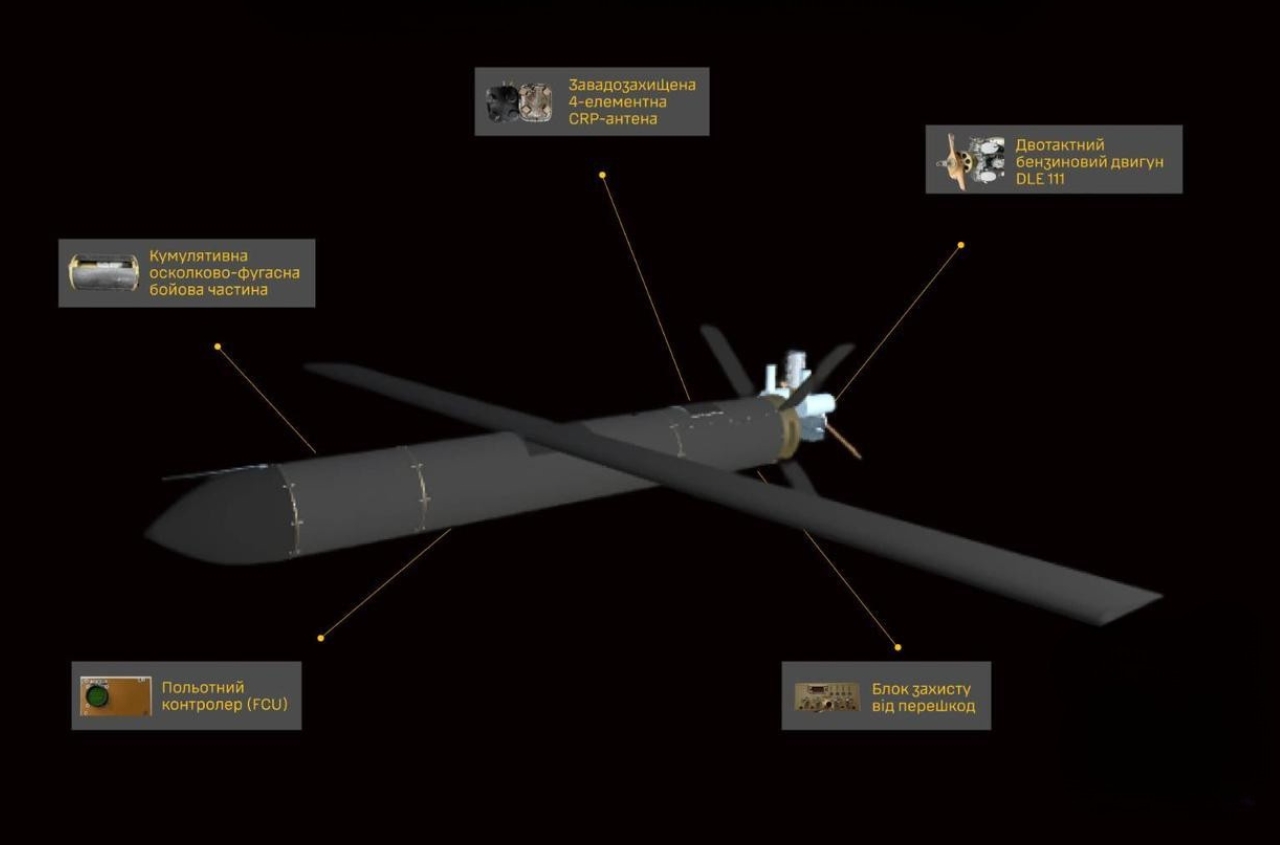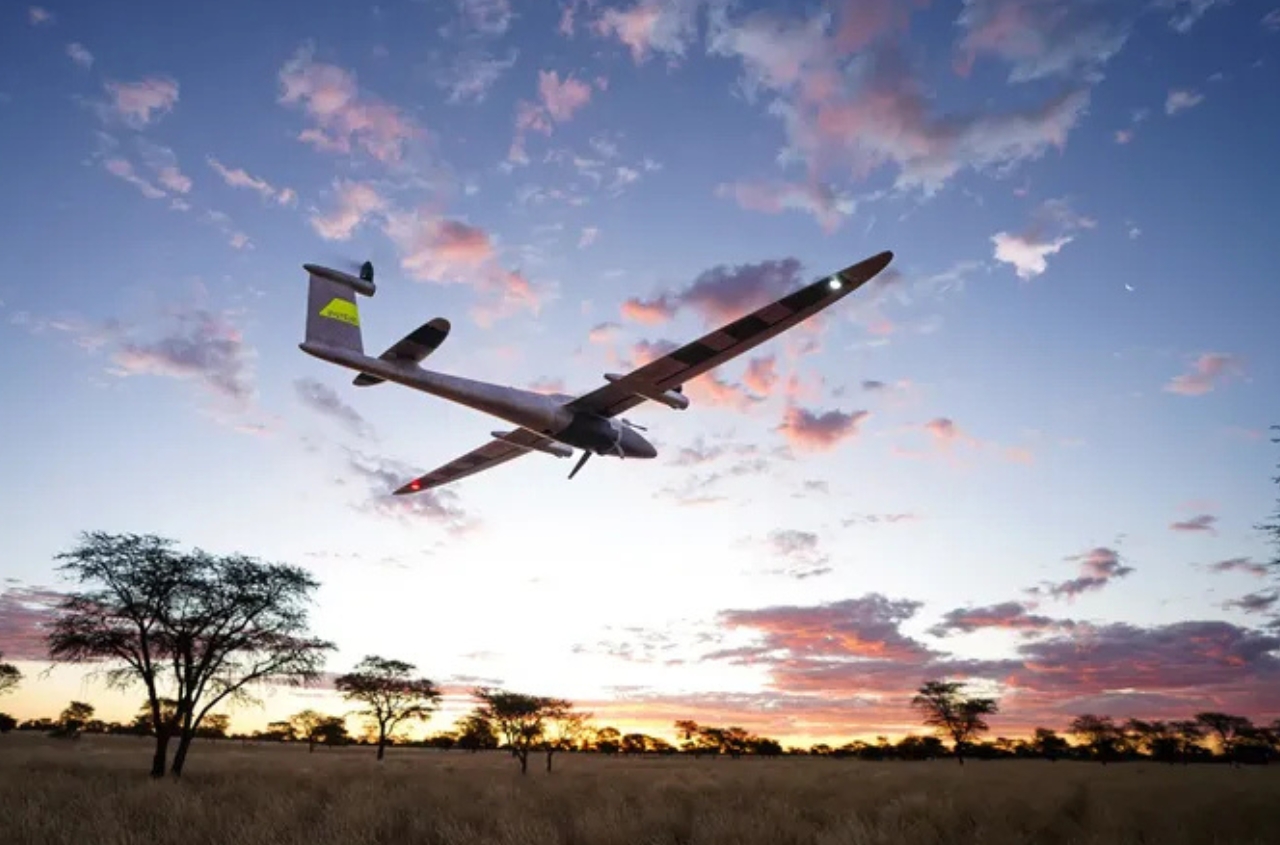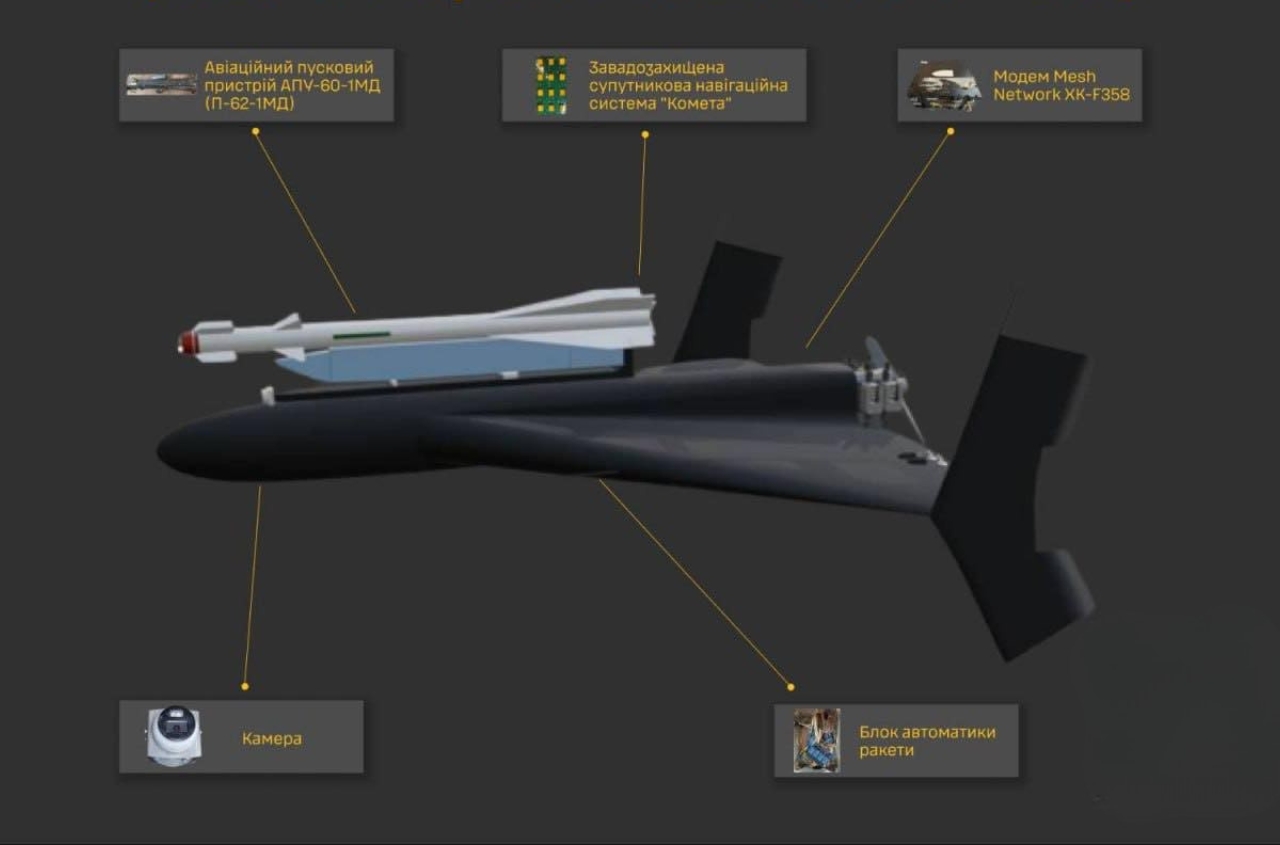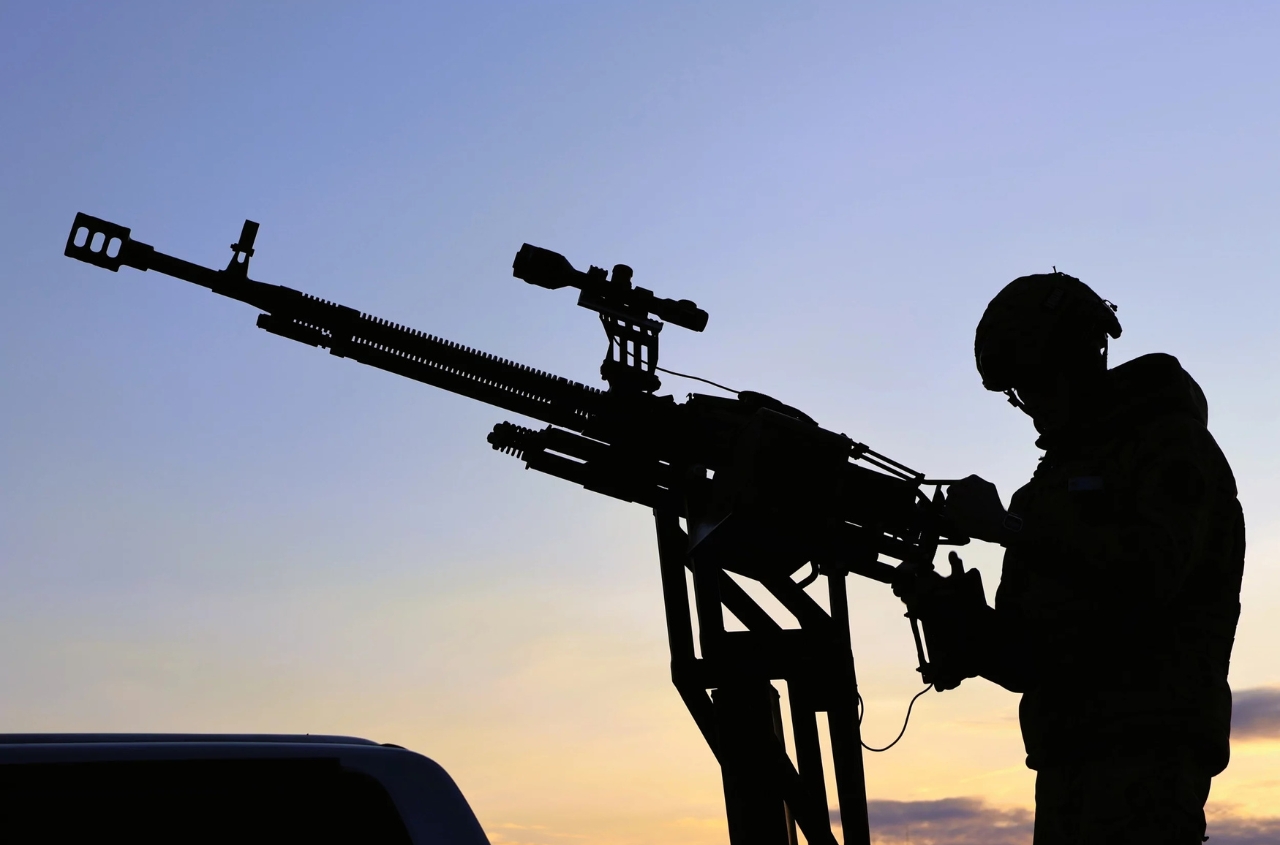Ukraine’s Intelligence Agency of the Main Intelligence Directorate has released detailed information about the Iranian-made Shahed‑107 attack drone, which Russia has begun actively deploying in its war against Ukraine. The data and component breakdown were published on the War & Sanctions platform, the agency reported on Facebook.
The Shahed‑107 was first publicly unveiled by Iran’s Islamic Revolutionary Guard Corps in June this year amid heightened tensions in the Iranian‑Israeli conflict.
According to the Intelligence Agency of the Main Intelligence Directorate, the Shahed‑107 is a high‑wing UAV with a three‑metre wingspan and an X‑shaped tail unit that provides flight stability. Its airframe is made of carbon fibre, with aluminium structural elements. The examined drone carried a 15‑kg cumulative high‑explosive fragmentation warhead, similar to those used in other Shahed‑series drones.
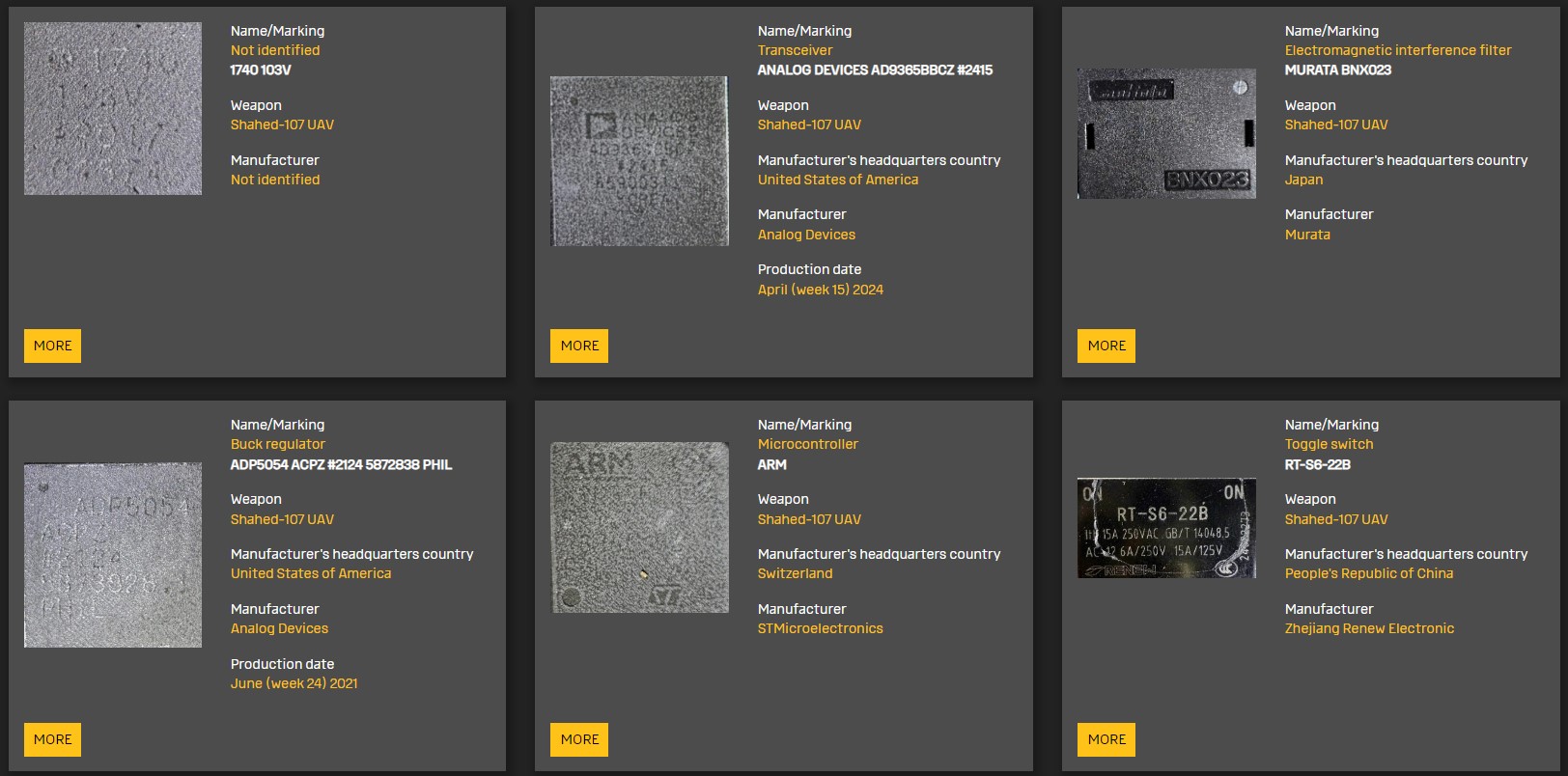
The drone is powered by a Chinese-made two‑stroke DLE 111 gasoline engine — a type of small engine already seen in various Russian UAVs, including the “Gerbera,” BM‑35, “Parody,” and “Delta.” With a 28‑litre fuel tank, the Shahed‑107 has an estimated operational range of around 300 km.
Its navigation system is based on an inertial unit similar to the Sadra system, combined with an anti‑jamming protection module and a four‑element resistant antenna. Flight control is carried out via an onboard FCU that commands the elevon and engine servos.
The electronic component base of the Shahed‑107, the agency notes, features parts sourced from the United States, Switzerland, China, Japan, Taiwan, the Netherlands, and Ireland — a pattern typical of Iranian and Russian drone designs.
The Intelligence Agency of the Main Intelligence Directorate emphasises that the appearance and use of the Shahed‑107 in Russia is further proof of deepening military cooperation between Tehran and Moscow. Iran’s weapons systems continue to be “combat‑tested” on Ukrainian soil against Western defence technologies, and the technological insights gained by Russia may later be used to fuel destabilisation efforts in other regions, the agency warned.









